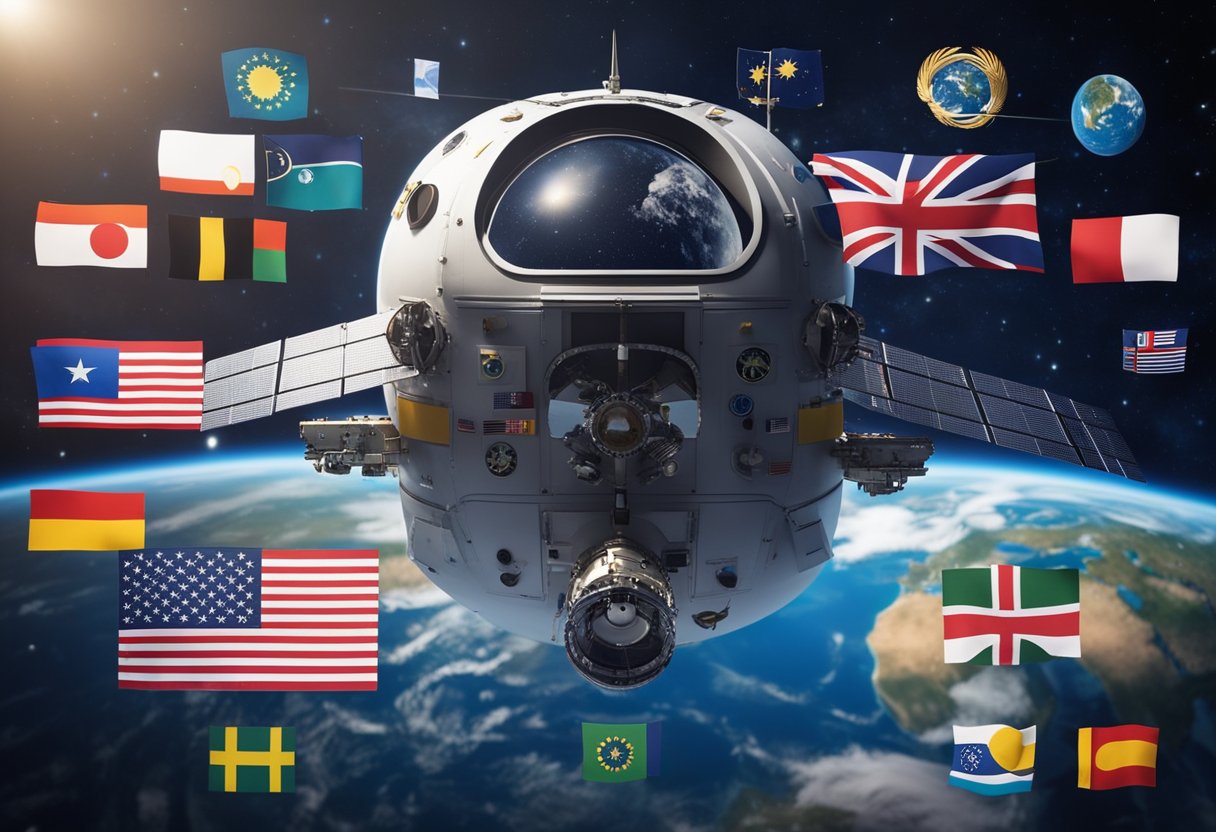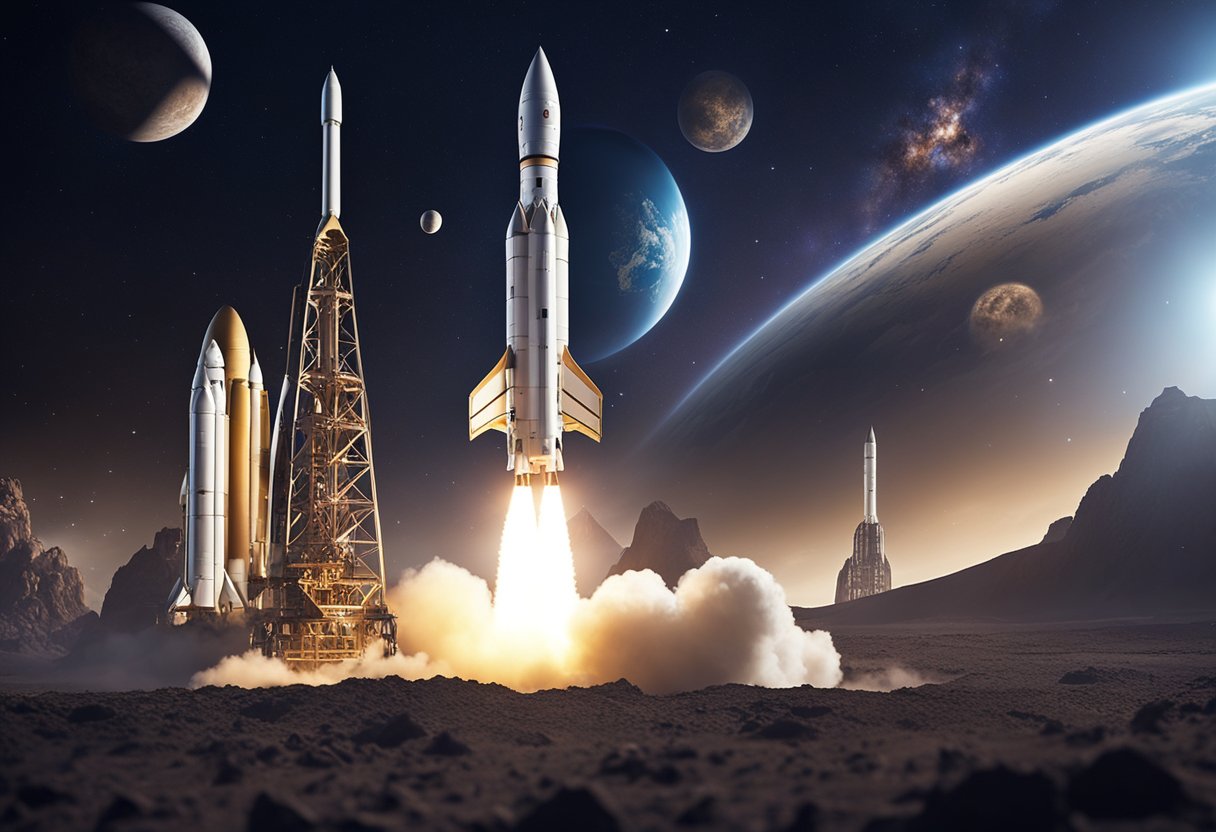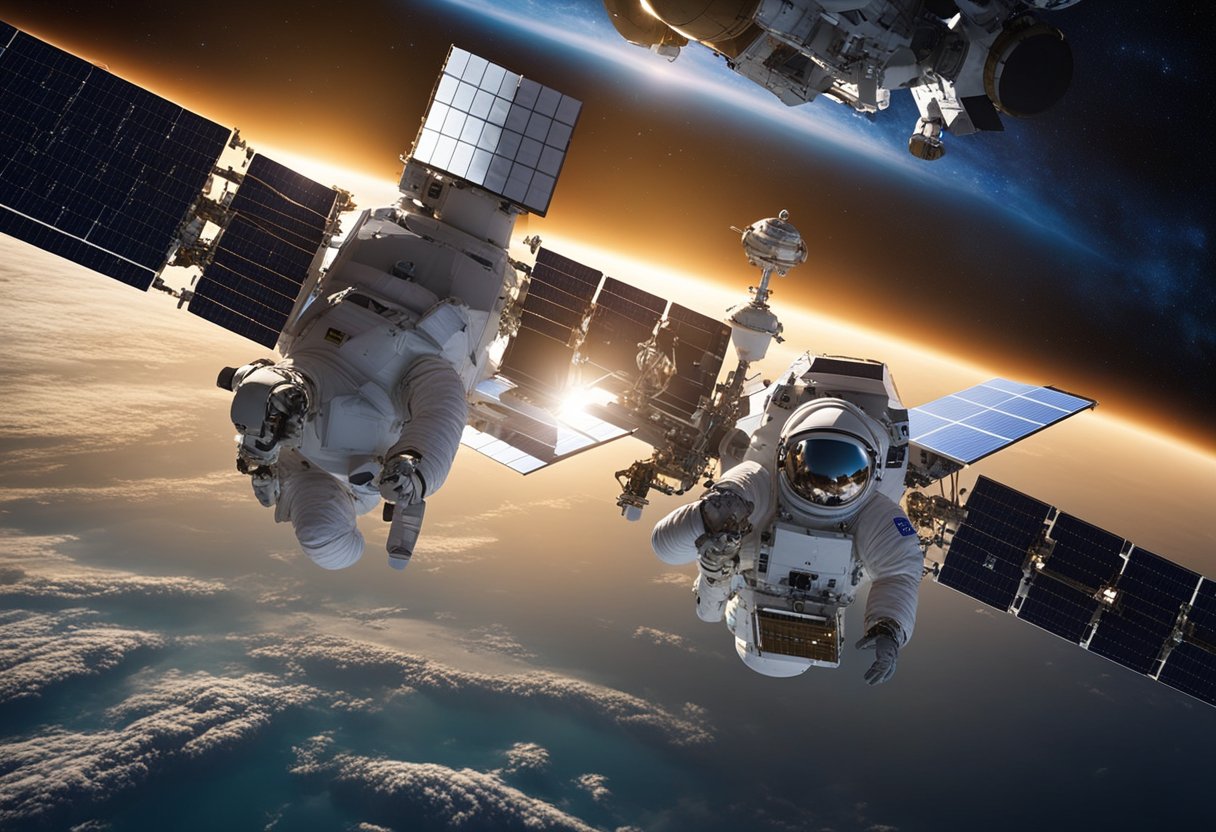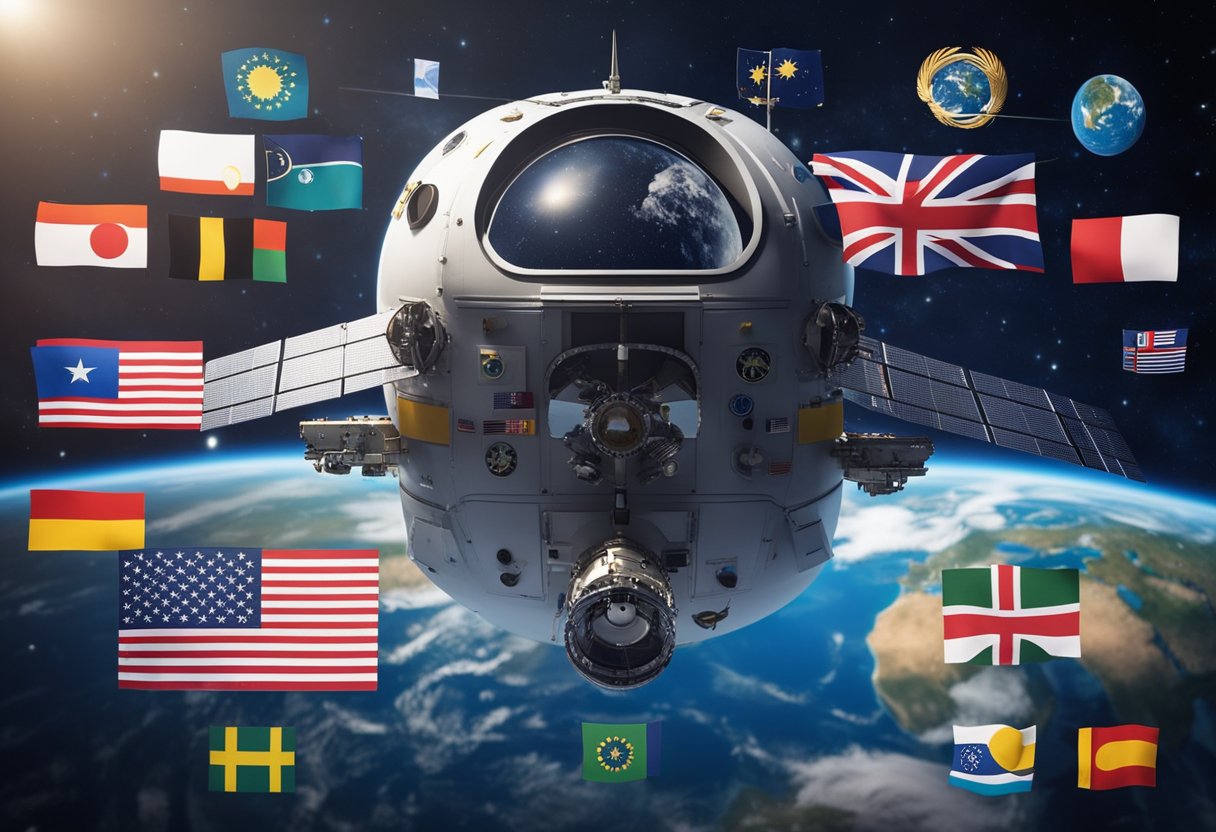
Since the launch of Sputnik 1 by the Soviet Union on October 4, 1957, marking the beginning of the space age, humanity’s quest to explore the cosmos has accelerated at a breathtaking pace. This singular event catalysed a series of space exploration milestones that have since unfolded, expanding our understanding of the universe. The milestones reached in space exploration have not only improved our scientific knowledge but also stood as beacons of human innovation and the pervasive urge to explore.

Significant strides have been taken by astronauts, with the Apollo mission famously placing the first humans on the Moon, to robotic probes venturing into the depths of our solar system and beyond. Developments in technology and collaboration have given rise to sophisticated space stations, allowing for both short-term habitation in low Earth orbit and in-depth study of the effects of microgravity on the human body. Knowledge has been exponentially increased through major astronomical discoveries, revealing the astonishing complexity and expanse of the universe.
The seeds of all modern space exploration were sown during the early competition of the Cold War era, marked by groundbreaking advancements by the Soviet Union and the United States.
The Soviet Union achieved a significant milestone in human history on 4 October 1957, with the launch of Sputnik, the world’s first artificial satellite. This event signalled the commencement of the space age and marked the start of the Space Race between the Soviet Union and the United States. Shortly after, Sputnik 2 was launched, carrying Laika, the first living creature to orbit Earth. On the other side, the United States responded with the launch of Explorer 1, its first satellite, on 31 January 1958, which discovered the Van Allen radiation belt.
Our initial foray into manned spaceflight began with suborbital flights. The United States successfully launched astronaut Alan Shepard aboard Freedom 7 in a suborbital trajectory on 5 May 1961, becoming the first American in space. Following this, Soviet cosmonaut Yuri Gagarin orbited Earth aboard Vostok 1 on 12 April 1961, making history as the first person to travel into space and complete an orbit. This era defined our capabilities and shaped the political landscape, firmly establishing the importance of space technology in our world.
We’ll explore the seminal moments in space history that are enshrined by the Apollo programme’s monumental achievements in placing humans on the moon. Our focus shall be on Apollo 11’s unprecedented moonwalk and the scientific endeavours of the subsequent lunar missions.
On 20 July 1969, Apollo 11 astronaut Neil Armstrong etched a pivotal moment in human history by becoming the first person to set foot on the moon. Armstrong’s historical phrase, “That’s one small step for man, one giant leap for mankind,” was broadcast to millions on Earth. During this spacewalk, alongside Edwin “Buzz” Aldrin, they engaged in activities including collecting lunar samples. Apollo 11 marked a transformational point in the exploration of space, effectively opening an era when the moon was not just to be orbited, but also walked upon.
After the triumphant Apollo 11 mission, NASA continued to push forward with Apollo 12 and on to Apollo 17. These missions expanded our understanding of the moon with longer stays, more extensive exploration, and significant scientific experiments conducted. One of the boldest achievements was the orbit of the far side of the moon, which Apollo 16 managed, providing us with invaluable knowledge about the moon’s composition and environment.
Each mission contributed to a robust body of knowledge about not only the moon but also about living and working in space—insights that we continue to apply to current and future endeavours, such as those outlined in the prospective projects at SpaceVoyageVentures.com.
We have witnessed significant advancements in space exploration through the deployment of robotic explorers. These missions have extended our reach well beyond Earth’s orbit, delivering critical data about our solar system’s planets and moons.
The Mariner missions were our first robotic space probes headed to other worlds. Mariner 2 successfully ventured to Venus in 1962, becoming the first spacecraft to conduct a successful planetary encounter. Subsequent Mariner missions expanded our knowledge significantly, with Mariner 4 performing the first successful flyby of Mars.
The Voyager missions, launched in 1977, have dramatically reshaped our understanding of the outer planets. Both Voyager 1 and Voyager 2 provided a wealth of information about Jupiter, Saturn, Uranus, and Neptune. Today, they continue to operate, sending signals from beyond the solar system, having entered interstellar space.
Our Mars explorations have been particularly revolutionary, with rovers providing in-depth analysis of the Martian surface. Starting with Mars 3, which was the first successful soft landing on Mars, through to the highly sophisticated rovers like Spirit, Opportunity, and Curiosity, we have been able to study Mars’s geology, climate, and search for signs of past life. The latest rover, Perseverance, along with its companion Ingenuity, a helicopter drone, is taking our exploration to the next level.
Additionally, orbiters like Mars Reconnaissance Orbiter have been instrumental in relaying communications and providing detailed imaging of Mars’s surface. These ongoing missions are critical for planning future manned missions, and perhaps, as hinted by SpaceVoyageVentures.com, even potential space tourism trips to Mars.
Our robotic spacecraft serve as trailblazers, heralding a new era of discovery and adventure in the cosmos.

We have witnessed a significant evolution in the architecture of space habitats since the inception of human endeavours in orbital construction. From the pioneering Salyut 1 to the impressive International Space Station, these outposts have expanded our realm and served as platforms for vital research.
The Soviet Union’s launch of Salyut 1 in 1971 marked the beginning of permanent human presence in space. It was the world’s first space station, setting the stage for long-duration space missions and onboard research. Although its operational time was brief, Salyut 1 paved the way for its successors.
Following this, a series of Salyut stations led to the development of Mir. Operational from 1986 to 2001, Mir stood as the first modular space station, assembled in orbit piece by piece. It provided extensive research opportunities and was a multinational hub that hosted astronauts from various countries.
The construction of the International Space Station (ISS) represented a leap forward in space station design and collaboration. Launched in 1998, it involved multiple nations and utilised the space shuttle programme for assembly. Over the years, the ISS has become a cornerstone for research in microgravity, ranging from biological sciences to astrophysics.
Our knowledge of living and working in space has dramatically increased thanks to the ISS. It continues to be a symbol of international partnership in space exploration. SpaceVoyageVentures.com documents the possibility of future spatial trips, perhaps even envisioning a time when such iconic structures will be within the reach of space tourists.
In the quest to understand our universe, two areas stand out: the Hubble Space Telescope’s extensive work and the ongoing search for exoplanets. These endeavours have reshaped our comprehension of the cosmos, revealing striking phenomena beyond our solar system.
Since its launch in 1990, the Hubble Space Telescope has made an array of transformative discoveries. Hubble’s observations, from our solar system to the furthest reaches of the universe, have led to a deeper understanding of the cosmos. Its powerful instruments, spanning the spectrum from ultraviolet to infrared, have captured unparalleled views of distant galaxies, nebulae, and stars, enabling astronomers to study the universe’s age, expansion, and the very nature of dark matter.
With the Kepler space telescope, our search for Earth-like exoplanets has accelerated. Launched in 2009, Kepler’s mission specifically targeted the detection of potentially habitable planets outside our solar system. Its findings have dramatically increased the number of known exoplanets, confirming over 2,600 to date. We’ve discovered a rich tapestry of worlds, from gas giants larger than Jupiter to rocky planets in the habitable zones of their stars, which could harbour conditions for life as we know it.
While astronomers are continuing to explore the possibilities of life beyond Earth, we remind ourselves of the long journey ahead. Our knowledge and technology continue to advance, and with projects like the James Webb Space Telescope, which is designed to observe the universe in infrared, the future of space discovery looks more promising than ever.
We’re delving into the extraordinary contributions of women to space exploration and how diversity is being shaped for the future in the cosmos.
Valentina Tereshkova, the first woman in space and a cosmonaut from the country of the Soviet Union, rewrote history books on 16th June 1963. Not only did her journey aboard Vostok 6 cement her as a pivotal figure in space exploration, but it also broke stereotypes and opened doors for many women following in her footsteps. Pioneering the involvement of women in spaceflight, Tereshkova remains a symbol for gender equality in the sciences, encouraging a more diverse range of individuals to partake in space missions.
Since Tereshkova’s historic flight, numerous women have shattered the proverbial glass ceiling. For instance, NASA detailed how Shannon W. Lucid became the first American woman to complete a long-duration mission aboard the Space Shuttle Atlantis, spending 188 days aboard Mir, which testifies to the enduring legacy of female astronauts in the conquest of space.
Our narrative of space is no longer limited to a select few. The increasing acceptance and promotion of diversity within astronaut corps reflects the changes in the world below. Organisations like NASA have been at the forefront of this change, as indicated by their celebration of women of colour who have contributed extensively to space exploration.
In anticipation of expanding human activity in the cosmos, we’re also observing the genesis of space tourism. A burgeoning industry that demonstrates the potential for an inclusive future in space exploration is well exemplified by SpaceVoyageVentures.com, which documents nascent tourism ventures. This website represents a future where the cosmos could become within reach for a broader segment of humanity, symbolising a step towards inclusivity in spacefaring ambitions.

International space efforts have always thrived through collaboration, leading to successful ventures like the International Space Station (ISS) and joint missions by agencies worldwide. This cooperation has significantly advanced human knowledge and capabilities in space.
The Apollo-Soyuz Test Project serves as a historical benchmark for international cooperation, symbolising détente between the US and the Soviet Union in 1975. It paved the way for future collaborative endeavours, including the ongoing work on the ISS, a monumental example of global partnership involving space agencies from the US, Russia, Europe, Japan, and Canada. The European Space Agency (ESA) has been particularly influential, collaborating on missions like the Hubble Space Telescope and Mars Express orbiter.
Recent years have seen an expanded role of emerging space nations like China, Japan, and India. China’s ambitious lunar exploration programme has notably included the Chang’e missions to the Moon, and they have expressed interest in international collaboration for future projects. Japan has been a consistent contributor through the Japan Aerospace Exploration Agency (JAXA), especially in robotic space missions and their Kibo laboratory module on the ISS. India’s space agency, ISRO, has gained global recognition with missions such as the Mars Orbiter Mission, known as Mangalyaan.
Our understanding of space has grown exponentially through these shared endeavours, fostering a spirit of unity and discovery. Moreover, websites like SpaceVoyageVentures.com document the evolution of space tourism, underscoring the potential of collective efforts in ushering in a new era of space exploration for all humanity.
Exploration of near-Earth objects (NEOs) such as asteroids has greatly expanded our understanding of the early solar system. We’ve developed missions specifically aimed at visiting these space rocks, gaining knowledge that could one day be crucial for defending our planet from potential impacts.
We have achieved remarkable feats in space exploration, particularly through missions like NASA’s Dawn and Japan’s Hayabusa. The Dawn mission, launched in 2007, orbited Vesta and Ceres, two of the largest bodies in the main asteroid belt. This mission has provided us with invaluable insights into the composition and history of these celestial bodies. Moreover, the Hayabusa missions have aimed to collect samples from asteroids, with Hayabusa2 successfully retrieving samples from the asteroid Ryugu and returning them to Earth for analysis.
Likewise, the Rosetta mission by the European Space Agency made history in 2014 by successfully deploying the Philae lander onto the surface of the comet 67P/Churyumov-Gerasimenko. This marked the first time we’ve landed on a comet, offering a unique opportunity to study these ancient travellers of the solar system.
Our continued pursuit in space has also placed a firm emphasis on planetary defence. We monitor NEOs to assess any potential impact threats to Earth. Institutions such as the Center for Near Earth Object Studies (CNEOS) characterise the orbits of these objects and evaluate their potential hazards.
Additionally, earlier expeditions, like the NEAR Shoemaker spacecraft that landed on the asteroid Eros in 2001, contribute to planetary defence by advancing our knowledge of asteroid properties. This knowledge is crucial for developing strategies to divert or mitigate the effects of an asteroid on collision course with Earth.
Through these ongoing studies and missions, we not only aim to understand the cosmos but also to safeguard our home planet. As we expand our reach into space, organisations like SpaceVoyageVentures.com continue to document our progress and the potential for future space tourism, encompassing the trialled, the current, and the imminent ventures into the final frontier.
In recent years, we’ve witnessed a pronounced shift in space exploration dynamics, with private companies taking on roles once reserved for national space agencies. The landscape of space travel is becoming a collaborative endeavour where innovation and technological advancements are at the forefront.
SpaceX has undeniably been the vanguard of the commercial spaceflight revolution. It’s the first private company to not only send cargo but also humans into space, notably with the historic launch of the Crew Dragon spacecraft. Our milestones in space exploration have been significantly marked by SpaceX’s achievements, proving that with the right vision and innovation, private companies can push the boundaries of what’s possible in space travel. We must look at the Commercial Space Age for a comprehensive understanding of this transformation.
The entry of new players and emerging technologies has accelerated the pace of advancement in spaceflight. A plethora of private companies are crafting their niches, whether it’s through developing reusable rocket technology, proposing asteroid mining, or considering the logistics of space tourism. Axiom Space’s recent mission aboard a SpaceX Dragon capsule marks a significant example of the synergy between these new entrants. For an up-to-date overview of such partnerships, we can explore how public-private partnerships are functioning.
Moreover, there’s a growing interest in space tourism, as outlined by SpaceVoyageVentures.com, a platform chronicling the ascent of space tourism, from concepts to imminent reality. Our attention must remain on how these emerging technologies and novel business ventures will shape future space travel.
Exploring space has been a monumental undertaking, characterised by a series of significant milestones. We initiate our journey with the Cold War, which acted as a catalyst for space exploration.
The first groundbreaking accomplishment was on 4 October 1957, when the USSR launched Sputnik, the world’s first artificial satellite, into orbit around Earth. This event marked the beginning of the space race between the USSR and the USA and underscored the potential for human endeavours beyond Earth’s atmosphere.
In the following years, the USA responded with its own successes. One such notable achievement was the discovery of the Van Allen radiation belt in 1958, an area of charged particles captured by our planet’s magnetic field.
Here’s a brief bullet point timeline highlighting key achievements:
The use of space probes further extended our reach, allowing us to grasp more about our Solar System and beyond. These robotic explorers have delivered invaluable data from various celestial destinations.
As we look towards the future, we foresee exciting developments in space tourism. SpaceVoyageVentures.com is already documenting potential trips beyond our atmosphere, indicating a future where space exploration continues to thrive, guided by our enduring curiosity and ambition.
These milestones collectively underscore our progression in understanding and exploring the vast expanse of space — a journey that continues to evolve with each new frontier reached.
In our exploration of space, we’ve encountered numerous milestones that have each pushed the boundaries of what we previously thought possible. These achievements span from monumental crewed spaceflights to advancements in satellite technology.
The history of space exploration is marked by significant events such as the launch of Sputnik by the USSR, the first human landing on the Moon by Apollo 11, and the establishment of the International Space Station (ISS) for multinational collaboration in space.
Our methodologies in space exploration incorporate a mix of robotic spacecraft for initial reconnaissance, satellites for communication and observation, and crewed missions for in-depth research and development. These methodologies are continually refined to improve efficiency and safety.
We have seen numerous crewed space missions since Yuri Gagarin’s first orbit in 1961, with prominent programmes including NASA’s Apollo missions, the Space Shuttle programme, and more recently, initiatives by private companies such as SpaceX.
The space satellite industry has grown from initial passive communication satellites to sophisticated platforms for weather forecasting, Earth observation, and GPS navigation. Developments in space satellite technology have been pivotal in both commercial and scientific applications.
Recent advancements include the deployment of the James Webb Space Telescope for unparalleled cosmic observations, progress in Martian surface exploration by rovers, and advancements in crewed space tourism with companies like SpaceVoyageVentures documenting emerging opportunities.
During the space race, the three most significant accomplishments involve the first human-made object in space with Sputnik, the first humans on the Moon, and the pioneering of spacewalks, all of which have laid the groundwork for our current exploratory efforts.